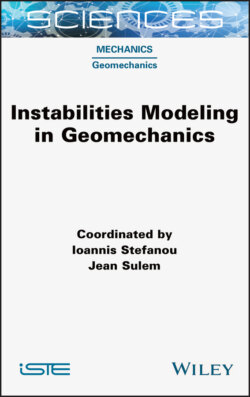Читать книгу Instabilities Modeling in Geomechanics - Jean Sulem - Страница 13
1.2. General remarks
ОглавлениеAs we started with a promise to be wide open and inclusive, we have to issue several warnings in order to try to wave off an inevitable confusion that the subject brings, despite the appearance of a strictly rigorous approach.
To start with, in a geoengineering/geophysics context, instability or, better, loss of stability may mean instability of a material per se (at a point), instability of a soil/rock mass, or speaking mathematically of a boundary value problem. In other terms, we speak of a local or global stability. A local loss of stability at at least a single point of the continuum is considered a necessary (but far from sufficient) condition for global instability. Similarly, a local instability in a volume around a tunnel opening may be critical for a highway authority, but of no relevance to the stability of the mountain in which it is built. On the other end of the spectrum, local fault instability may induce global slope instability, or trigger an earthquake. It depends on the geometrical constraints that the considered boundary value problem implies.
Local stability is usually tested in a materials laboratory on a uniform specimen, or in a mathematical model, for a single material point. Global stability can rarely be tested on a large scale, but attempts have been made to monitor known landslide sites or earthquake source sites, or to conduct large liquefaction experiments.
Physically, instability may mean many things depending on the type of material and on the geometrical scale of consideration. In the plainest case, a macroscopically homogeneous material element in a laboratory under sufficiently low stress deforms in a homogeneous manner when a uniform traction is applied at its boundary. However, for unspecified physical reasons, at a certain stress level it responds with an unconstrained strain to, for example, a small stress perturbation. Often, the homogeneous strain is associated with a diffuse dilatancy (increased volume). This is a classical representation of instability. The key point is the homogeneity of the response maintained during the unstable phase.
Alternatively, we perceive as critical a loss of uniqueness of response, which means that a repetition of what is theoretically the same experiment would yield a different, still homogeneous, response. An additional option is to treat as unstable a response in which the increase in internal energy over a virtual displacement is less than the work of the external forces. Each of the above critical conditions, in principle, leads to a different criterion, both locally and globally.
In addition, when in a homogeneous sample the straining becomes more advanced, this strain homogeneity may be spontaneously lost. It is inevitable that, due to the actual irregularities in the distribution of minerals with a different stiffness, interface properties, pre-existence of structural defects, etc., high concentrations of stress and/or strain occur. Such concentrations may result in various forms of local damage, like mineral decohesion, micro-fissures, nucleation of pores, and intermineral or intergrain slips, depending on the structure, mineralogy and history of the material. The interaction of such local singularities gives rise to a variety of failure mechanisms. Despite their differences, their common feature is the possibility of microdefects developing into large-scale mechanisms of failure, such as slip-surface, fault or compaction band, leading to landslides, sinkholes, faulting, subsidence, etc. Such mechanisms are often characterized as macroscopic strain localization, when certain features of continuity abruptly cease to persist, like intergranular or intermineral phase contact. Commonly, more than one mechanism occur simultaneously, as in Figure 1.1, which was obtained for a sample of sand, and in which two separate slip surfaces and a substantial volume of diffuse dilatancy are observed after a triaxial compression test.
A mathematical representation of the physics above is equally complex. Often, Lyapunov-type instability (defined as an unconstrained response to a limited perturbation) is implied to result from the solution of a system of differential equations describing the nonlinear material behavior. The instability consists of bifurcation of the solution of the system of equations, which clearly implies that the solution is not unique.
Figure 1.1. Multiple shear bands and a volume increase due to diffuse dilatancy
The criteria for exclusion of instability may be local (or for uniformly deformed systems) or global for a piece of continuum. There are several different criteria, expressing very similar, but not identical conditions.
The first type of criteria refers to certain characteristics of material energy or work required to deform in a unique manner (meaning one uniform solution) under the conditions of equilibrium, for a specific stress–strain relationship and geometrical strain–displacement relationship. The second type allows for strain localization, with a particular geometrical form of deformed configuration that satisfies the conditions of equilibrium that allow certain forms of discontinuity, that is, it admits a certain type of discontinuity (shear or compaction bands). Global criteria consist of the same requirements but integrated over the entire volume of the considered body. The very definition of “bifurcation point” varies from author to author, although in any specific situation there is usually no doubt about what should be called a bifurcation point. The above types of instabilities and their implications have been studied in the context of geomaterials for nearly 50 years, and an example of their implications and their relationships is reproduced in Figure 1.2 from an old paper (Bigoni and Hueckel 1991a). The most interesting (to this writer) recent developments concern geomaterials in their multiphysics context.
Figure 1.2. Relationships between criteria for uniqueness, second-order work, strong ellipticity, Mandel’s stability and localization
